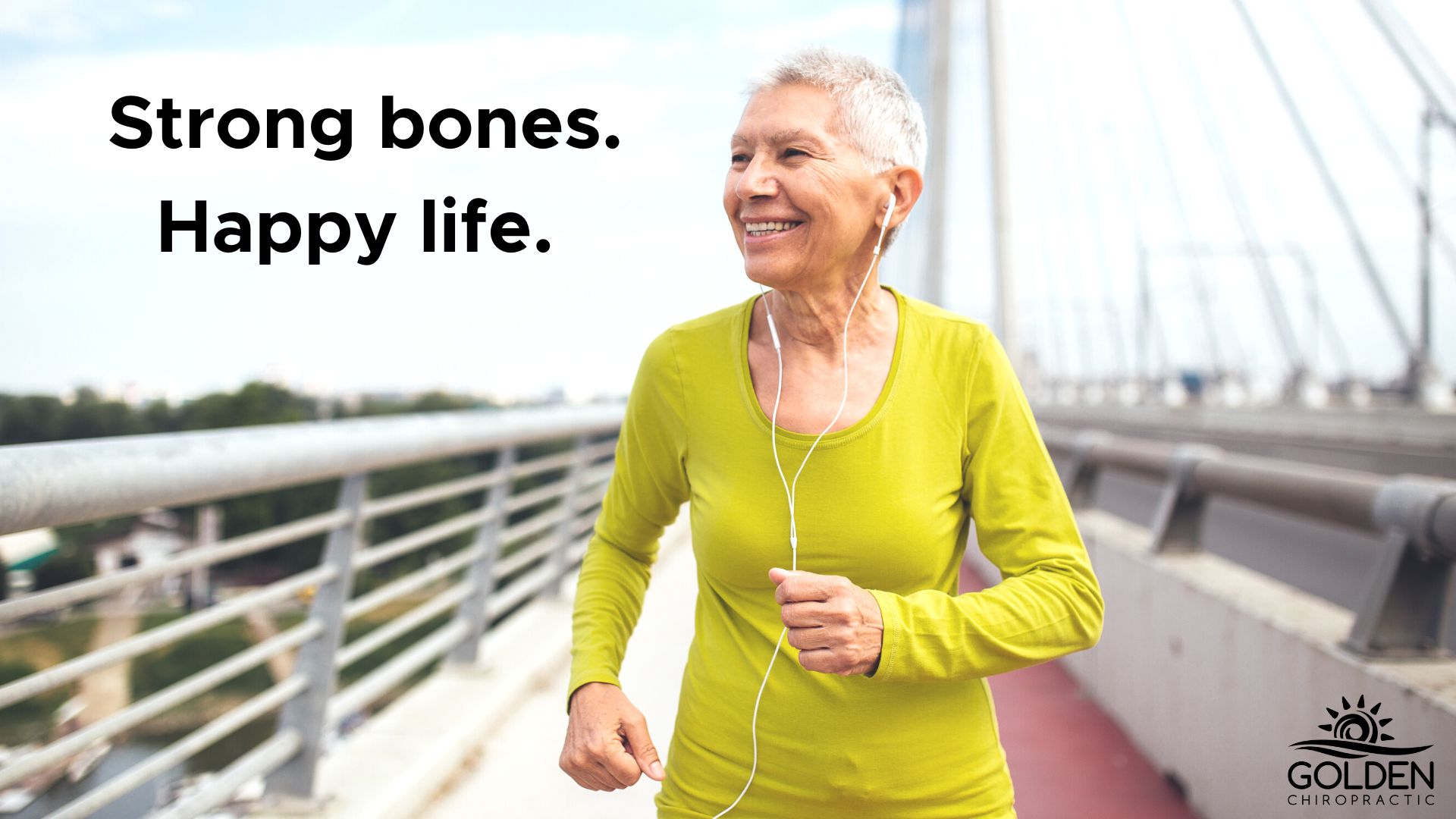
10/14/2025 by Dr. Goldi Jacques-Maynes
Don't Accept Osteoporosis as Inevitable
Let’s talk about the myth that frailty is “just a part of aging.”
We’ve all heard the story: an older woman falls, breaks her hip, and “never quite recovers.”
What we don’t hear enough about are the heartbreaking realities that follow.
Within a year of a hip fracture, half of women lose their independence. Many can’t walk without help, and some never make it back home.
But that loss of freedom isn’t necessarily destiny.
You can do things to reduce your risk of developing fragile bones.
The quiet acceptance of osteoporosis as “normal” aging makes me angry sometimes. That’s why I want to encourage my patients and loved ones to take their bone health more seriously—as seriously as heart health and cancer prevention.
Why do we take heart disease and cancer seriously, but shrug off bone loss?
A woman’s lifetime risk for breast cancer is about 15%.
That same woman’s lifetime risk for a hip fracture is 17%.
We all know when to get our mammograms, but tend to leave bone-density scans off the calendar.
Fractures from osteoporosis cause as many hospitalizations as strokes and heart attacks.
Understanding what’s happening, and how you can help your bones age stronger, goes a long way towards preventing those hospitalizations.
How exactly do our bones age, and why does it cause osteoporosis?
Osteoporosis literally means “porous bone.” It’s when bone mass and bone strength drop so low that even a small bump can cause a break.
Bone is living tissue, constantly remodeling. Old bone breaks down, new bone builds up.
When we’re young, our bones break down and rebuild in perfect balance. As we age, that balance shifts—the cells that remove old bone keep working, but the ones that build new bone slow down.
Over time, we lose more bone than we make.
You reach peak bone mass in your late 20s, then gradually lose a little each year.
For women, that loss accelerates after menopause, when estrogen (a key bone-builder) drops. Some women can lose up to 6% of bone mass in just a few years.
For men, bone loss happens later than for women. It also tends to progress more slowly. But when fractures happen for men, there tend to be more severe outcomes.
There are also other risk factors involved in developing osteoporosis.
Knowing these risk factors gives you more power over your bone health.
Other contributors to bone loss include:
- Early menopause – More years lived without protective estrogen
- Family history – Fractures in parents or siblings increase your risk
- Low body weight or eating disorders – Reduce estrogen and peak bone mass
- Certain medications – Steroids, aromatase inhibitors, and DMPA birth control
- Chronic conditions – Rheumatoid arthritis, diabetes, thyroid disorders
- Lifestyle factors – Smoking, heavy alcohol use, inactivity
- Poor nutrition – Low calcium or vitamin D intake
- Weak muscles and poor balance – Magnify fracture risk
When it comes to bone health, calcium and vitamin D are your best friends.
When you don’t get enough calcium from food, your body borrows it from your bones—that contributes to bone weakness.
When it comes to calcium, aim for:
- 1,000 mg daily if you’re under 50
- 1,200 mg daily if you’re over 50
Good sources of calcium include dairy or fortified plant milks, tofu, salmon with bones, sardines, kale, and figs.
Vitamin D helps your gut absorb that calcium and keeps your muscles strong. You can get vitamin D from sunshine, supplements, or foods like fatty fish, egg yolks, and butter.
Most adults need 600–1,000 IU of vitamin D per day.
Understanding your risk factors can help you seek interventions earlier to slow down bone loss. Making sure you’re getting the right nutrients will also help keep your bones, and your body in general, functioning as well as possible.
If you have risk factors, or are just getting older and are concerned, you can investigate deeper.
How can you know if you have osteoporosis?
That’s the tricky part—it’s a silent disease. Most people don’t know until they break a bone.
The standard screening in the U.S. is a DXA (DEXA) scan (bone-density test).
All women over 65 should get one, sooner if you have risk factors like family history, smoking, certain medications, or early menopause.
There are also online self-assessments for men and women that can flag risk early.
Osteoporosis Self-Assessment Tool for Women
Osteoporosis Self-Assessment Tool for Men
If you're thinking you may have some bone loss, or have already been diagnosed with osteoporosis, you don't need to be afraid of chiropractic.
Many of our older patients who feel more fragile are pleasantly surprised at how gently we can get them out of pain and increase their range of motion.
And, the truth is...
Chiropractic care can help you with bone loss.
Gentle chiropractic adjustments stimulate osteoblasts: the cells that rebuild bone.
Adjustments also help keep your joints mobile, which encourages healthy movement and balance—two essentials for preventing falls.
In our clinic, we modify techniques for patients with osteoporosis.
Our goal is always safety, comfort, and gradual strength restoration. We use gentle tools like the activator and less forceful techniques.
We also offer guidance on weight-bearing exercises and daily movement that strengthen bones naturally.
Medication isn’t the only answer for osteoporosis.
If you are diagnosed with osteoporosis, there are pharmaceuticals that may be prescribed.
Due to negative side effects of most drugs, we usually recommend starting with lifestyle changes first:
- Quit smoking and limit alcohol
- Eat calcium- and vitamin D-rich foods
- Do regular, weight-bearing exercise
- Keep your spine and joints moving well
- Work on your balance
Medication can help, but lifestyle changes and gentle movement are the true medicine for prevention.
Healthy aging means keeping your strength and independence.
Your older years should be filled with hiking, outings with friends, playing with grandchildren, gardening, dancing, and laughing.
Your bones deserve care! If you’re ready, we can help you keep moving safely and confidently.
Here in our Aptos office, our chiropractors use gentle, evidence-based care to support bone health and balance. Book your appointment online and let’s keep your bones resilient for the years ahead.
